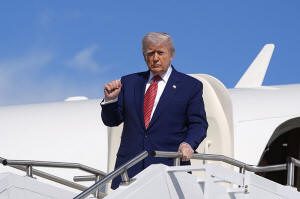|
On
the same day of last month's proclamation allowing commercial
fishing in the monument, Trump issued an order to boost the U.S.
commercial fishing industry by peeling back regulations and
opening up harvesting in previously protected areas.
The monument was created by President George W. Bush in 2009 and
consists of about 500,000 square miles (1.3 million square
kilometers) in the central Pacific Ocean. President Barack Obama
expanded the monument in 2014.
A week after the April 17 proclamation, the U.S. National Marine
Fisheries Service sent a letter to fishing permit holders giving
them a green light to fish commercially within the monument's
boundaries, even though a long-standing fishing ban remains on
the books, according to a lawsuit filed Thursday in federal
court in Honolulu.
The first longline fisher started fishing in the monument just
three days after that letter, according to Earthjustice, which
has been tracking vessel activity within the monument using
Global Fishing Watch.
The Department of Justice declined to comment Friday.
The lawsuit noted that commercial longline fishing, an
industrial method involving baited hooks from lines 60 miles
(96.5 kilometers) or longer, will snag turtles, marine mammals
or seabirds that are attracted to the bait or swim through the
curtain of hooks.
“We will not stand by as the Trump administration unleashes
highly destructive commercial fishing on some of the planet’s
most pristine, biodiverse marine environments,” David Henkin, an
Earthjustice attorney, said in a statement. “Piling lawlessness
on top of lawlessness, the National Marine Fisheries Service
chose to carry out President Trump’s illegal proclamation by
issuing its own illegal directive, with no public input.”
Designating the area in the Pacific Ocean to the south and west
of the Hawaiian islands as a monument provided “needed
protection to a wide variety of scientific and historical
treasures in one of the most spectacular and unique ocean
ecosystems on earth,” the lawsuit said.
The lawsuit added that allowing commercial fishing in the
monument expansion harms the “cultural, spiritual, religious,
subsistence, educational, recreational, and aesthetic interests”
of a group of Native Hawaiian plaintiffs who are connected
genealogically to the Indigenous peoples of the Pacific.
Johnston Atoll, the closest island in the monument, is about 717
nautical miles (1,328 kilometers) west-southwest of Hawaii.
All contents © copyright 2025 Associated Press. All rights reserved

|
|




